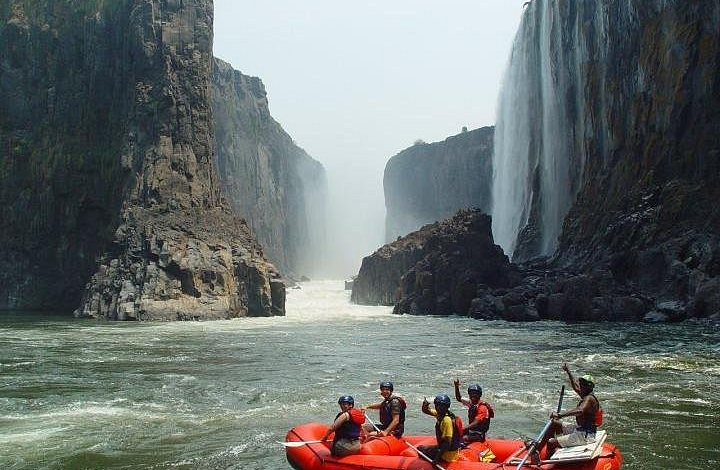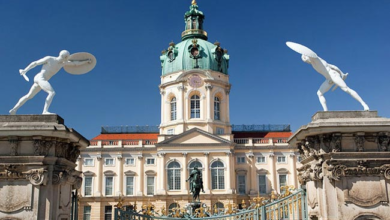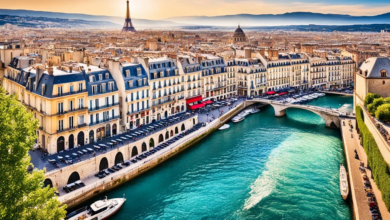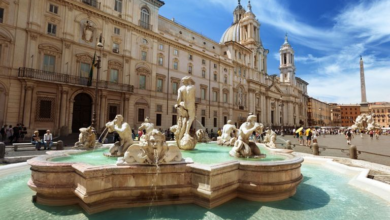The most important and best advice when traveling to Zambia

If you are planning to travel to Zambia, here are some important and best advice to consider:
- Safety and security: Zambia is generally a safe country, but it is important to take sensible precautions to protect yourself from crime. Avoid walking alone or traveling after dark. Keep vehicle doors locked, windows up, and valuables out of sight. Demonstrations and protests occasionally take place in Zambia, particularly in urban areas, and can disrupt local transport and escalate into violence. Avoid crossing protester roadblocks and take care when traveling in rural parts of North Western, Copperbelt, Central, and Luapula provinces close to the border with the Democratic Republic of Congo (DRC), particularly after dark1356.
- Health: Zambia has a high burden of HIV/AIDS, and malaria is prevalent. Use recommended mosquito repellents and sleep under insecticide-impregnated mosquito nets. Chemoprophylaxis is recommended for all travelers, even for short stays. Always carry your prescription medication in the original packaging, along with your doctor’s prescription. Check the Dangerous Drugs Act or consult the Zambia Medicines Regulatory Authority to ensure the medication is legal in Zambia2.
- Accessibility: Expect accessibility to be limited in public transportation, lodging, communication/information, and general infrastructure. Contact the US Embassy in Zambia to receive a list of providers2.
- Road safety: Many roads in Zambia are severely potholed, and traffic accidents occur frequently throughout the country, especially on Lusaka’s Great East Road. Poorly maintained vehicles, dangerous driving habits, and stray animals pose risks. Avoid overland travel to rural areas after dark. If you intend to drive, take care when driving, as vehicles are often poorly lit36.
- Travel documents: Ensure that your travel documents, including passports and visas, are valid and up to date. It is also recommended to make copies of these documents and keep them in a separate location1.
- Local customs and laws: Familiarize yourself with the local customs, traditions, and laws of Zambia. Respect the local culture and dress modestly to avoid any potential misunderstandings or conflicts1.
- Currency: The currency in Zambia is the Zambian kwacha (ZMW). Major credit cards are accepted in larger supermarkets, restaurants, and stores3.
It is important to note that the situation in Zambia can change rapidly. It is recommended to stay informed, follow local news, and consult with reliable sources of information before and during your trip.
When traveling to Zambia, here are some important and helpful tips to ensure a safe and enjoyable trip:
- Obtain necessary travel documents: Check the passport validity requirements and obtain a visa if required before your trip. Ensure you have all the necessary travel documents ready, including a valid passport and any required permits.
- Stay updated on travel advisories: Before traveling, check the travel advisories issued by your government or embassy for any updates or alerts regarding safety and security in Zambia. It’s essential to stay informed about the current situation and follow any recommendations or guidelines provided.
- Get comprehensive travel insurance: Purchase travel insurance that covers medical expenses, emergency evacuation, and other unforeseen circumstances. Make sure the insurance policy includes coverage for activities you plan to engage in, such as adventure sports or wildlife safaris.
- Take precautions for personal safety: While Zambia is generally safe for travelers, it’s advisable to take common-sense precautions. Be cautious of your surroundings, avoid displaying valuable items, and keep important documents secure. Use reliable transportation options and avoid traveling alone at night, especially in unfamiliar areas.
- Health and vaccinations: Check with your healthcare provider or a travel clinic well in advance to ensure you are up to date on routine vaccinations and any specific vaccinations required for Zambia. Malaria is prevalent in certain regions, so consult a healthcare professional about necessary antimalarial medication and take measures to prevent mosquito bites.
- Respect local customs and traditions: Familiarize yourself with the local customs and traditions of Zambia to show respect to the local population. Dress modestly, especially when visiting rural areas or religious sites. Learn a few basic phrases in the local language, such as greetings, which can help in communicating and building rapport with locals.
- Stay hydrated and practice food safety: Drink bottled or purified water and avoid consuming raw or undercooked food, particularly from street vendors. Stick to reputable restaurants and ensure the food is properly cooked and served hot.
- Wildlife encounters: If you plan to go on a safari or visit national parks, follow the instructions of trained guides and maintain a safe distance from animals. Respect wildlife and refrain from feeding or provoking them. Keep in mind that these are wild animals and can be unpredictable.
- Money matters: Familiarize yourself with the local currency (Zambian Kwacha) and have a mix of cash and cards for different situations. Inform your bank about your travel plans to avoid any issues with card usage. Be cautious with your belongings and avoid displaying large amounts of cash in public.
- Plan your activities and accommodations: Research and plan your activities and accommodations in advance. Whether you’re interested in wildlife safaris, exploring Victoria Falls, or cultural experiences, booking reputable tour operators or accommodations can enhance your experience and ensure a smooth trip.
Remember, these tips are general guidelines, and it’s important to assess your specific travel needs and preferences. Stay informed, be respectful, and have an enjoyable time exploring the beautiful attractions Zambia has to offer.
Zambia is a country with a lot to offer, from natural wonders to cultural experiences. Here are some must-see attractions in Zambia:
- Victoria Falls: Victoria Falls is one of the most famous tourist attractions in Zambia. It is a UNESCO World Heritage site and is known for its stunning views and adventurous activities such as bungee jumping, white water rafting, and helicopter rides1256.
- South Luangwa National Park: South Luangwa National Park is one of the best places to see wildlife in Zambia. It is home to a wide variety of animals, including elephants, lions, leopards, and hippos. Visitors can go on game drives, walking safaris, and night drives to see the animals up close26.
- Lower Zambezi National Park: Lower Zambezi National Park is another great place to see wildlife in Zambia. It is located along the Zambezi River and is home to elephants, lions, leopards, and other animals. Visitors can go on game drives, walking safaris, and canoe trips to see the animals26.
- Kafue National Park: Kafue National Park is the largest national park in Zambia and is home to a wide variety of animals, including elephants, lions, leopards, and cheetahs. Visitors can go on game drives, walking safaris, and boat trips to see the animals46.
- Livingstone Museum: Livingstone Museum is a great place to learn about the history and culture of Zambia. It has exhibits on the country’s pre-colonial history, colonial history, and post-independence history. It also has exhibits on the country’s art, music, and traditional customs35.
- Devil’s Pool: Devil’s Pool is a natural pool located at the edge of Victoria Falls. Visitors can swim in the pool and look over the edge of the falls for a thrilling experience3.
- Mosi-oa-Tunya National Park: Mosi-oa-Tunya National Park is located near Victoria Falls and is home to a variety of animals, including elephants, zebras, and giraffes. Visitors can go on game drives and walking safaris to see the animals3.
- Lusaka Markets: Lusaka Markets are a great place to experience the local culture and buy souvenirs. Visitors can find a variety of goods, including textiles, crafts, and food1.
- Cooking Class: Visitors can participate in a cooking class to learn how to cook traditional Zambian dishes. This is a great way to experience the local culture and cuisine1.
Zambia has a lot to offer, and these are just a few of the many must-see attractions in the country. It is important to prioritize your safety and well-being when making travel decisions and to follow the advice of local authorities and travel advisories.
Certainly! Here are some additional details and information about traveling to Zambia:
- Currency and Banking: The official currency of Zambia is the Zambian Kwacha (ZMW). While major credit cards are accepted in larger establishments such as hotels, restaurants, and shops in urban areas, it is advisable to carry some cash for smaller vendors and rural areas. ATMs are available in major cities and towns, but it’s always a good idea to have some cash on hand in case of any issues.
- Transportation: Zambia has a range of transportation options to suit different needs. Domestic flights are available between major cities and popular tourist destinations. Buses, minibusses (known as “kombis”), and taxis are common modes of transportation within cities and towns. It’s recommended to use reputable taxi services and negotiate the fare before starting the journey. If you plan to drive, be aware that traffic drives on the left side of the road in Zambia.
- Climate and Weather: Zambia has a tropical climate, and the weather can vary depending on the region and the time of year. The country has distinct wet and dry seasons. The dry season, from May to October, is generally the best time to visit, with cooler temperatures and less rainfall. The wet season, from November to April, brings higher temperatures and more frequent rain, but it offers lush landscapes and excellent wildlife viewing opportunities.
- Language: English is the official language of Zambia, making it relatively easy for English-speaking travelers to communicate. However, there are also several local languages spoken throughout the country, including Bemba, Nyanja, Tonga, and Lozi. Learning a few basic phrases in the local language can be appreciated by locals and enhance your interactions.
- National Parks and Wildlife: Zambia is renowned for its diverse wildlife and national parks. South Luangwa National Park, Lower Zambezi National Park, and Kafue National Park are popular destinations for wildlife safaris. These parks offer opportunities to see a wide range of animals, including elephants, lions, leopards, zebras, and various bird species. It’s recommended to book safaris with reputable tour operators or lodges for a safe and enriching experience.
- Victoria Falls: One of Zambia’s most famous attractions is the magnificent Victoria Falls, a UNESCO World Heritage site and one of the largest waterfalls in the world. Located on the border between Zambia and Zimbabwe, the falls offer breathtaking views and various activities such as guided tours, scenic flights, and thrilling adventures like whitewater rafting and bungee jumping.
- Cultural Experiences: Zambia is home to diverse ethnic groups, each with its unique traditions, music, dance, and crafts. Visiting local communities and cultural centers can provide insights into Zambian culture and traditions. It’s important to approach these experiences with respect and courtesy, seeking permission before taking photographs and observing local customs.
- Health and Safety: It’s advisable to consult a healthcare professional or travel clinic before traveling to Zambia to receive up-to-date information on required vaccinations and health precautions. Malaria is prevalent in some parts of the country, so taking appropriate antimalarial medication and using mosquito repellent is essential. It’s also recommended to have travel insurance that covers medical emergencies and evacuation.
- Adventure Activities: Zambia offers a range of adventure activities for thrill-seekers. Besides whitewater rafting and bungee jumping at Victoria Falls, you can go canoeing or take river cruises on the Zambezi River, embark on walking safaris or night drives in national parks, or even try your hand at fishing for tigerfish.
- Respect for Wildlife and Environment: When visiting national parks and engaging in wildlife activities, it’s crucial to follow the guidelines provided by guides and park authorities. Respect wildlife and their natural habitats, maintain a safe distance, and avoid any actions that may disturb or harm animals or the environment.
Remember to check the latest travel advisories and prepare accordingly before your trip. Zambia offers a rich blend of natural beauty, wildlife, and cultural experiences, providing travelers with an opportunity to explore and appreciate its unique offerings.
Zambia is a country with a lot of natural beauty and outdoor activities to offer. Here are some outdoor activities to do in Zambia:
- Visit Victoria Falls: Victoria Falls is one of the most famous natural wonders in the world and offers a variety of outdoor activities such as bungee jumping, white water rafting, and helicopter rides1235.
- Go on a safari: Zambia is home to a variety of wildlife, and going on a safari is a great way to see them up close. South Luangwa National Park, Lower Zambezi National Park, and Kafue National Park are some of the best places to go on a safari2345.
- Take a boat ride: Zambia has several rivers and lakes, and taking a boat ride is a great way to see the country’s natural beauty. The Zambezi River and Lake Kariba are popular destinations for boat rides13.
- Go fishing: Zambia has several rivers and lakes that offer great fishing opportunities. The Zambezi River is a popular destination for fishing13.
- Hiking and trekking: Zambia has several hiking and trekking trails that offer stunning views of the country’s natural beauty. The Victoria Falls Bridge Walk and the Kalambo Falls Trail are popular destinations for hiking13.
- Visit national parks: Zambia has several national parks that offer a variety of outdoor activities such as game drives, walking safaris, and bird watching. South Luangwa National Park, Lower Zambezi National Park, and Kafue National Park are some of the best national parks to visit2345.
- Attend a traditional festival: Zambia has several traditional festivals throughout the year that offer a unique cultural experience. The Kuomboka Festival and the Lwiindi Gonde Festival are some of the most popular festivals in Zambia3.
- Visit Livingstone Museum: Livingstone Museum is a great place to learn about the history and culture of Zambia. It also offers outdoor activities such as guided tours and nature walks15.

- Cuisine: Zambian cuisine is diverse and influenced by various ethnic groups. Staple foods include nshima (a thick porridge made from maize meal), served with relishes such as vegetables, meat, or fish. Other popular dishes include kapenta (small dried fish), biltong (dried meat), and ifisashi (a dish made with groundnuts and vegetables). Don’t miss the opportunity to try traditional Zambian dishes for an authentic culinary experience.
- Festivals and Celebrations: Zambia has a vibrant cultural scene, and attending local festivals can be a rewarding experience. The Kuomboka Ceremony, held by the Lozi people in Western Province, is a spectacular traditional event celebrating the migration of the Litunga (King) from the floodplains to higher ground. The Lwiindi Gonde Ceremony, celebrated by the Tonga people, is another significant cultural festival held every year. These festivals showcase traditional music, dance, and customs.
- Adventure in the Lower Zambezi: The Lower Zambezi National Park offers a unique opportunity for adventure enthusiasts. You can go on guided canoe trips along the Zambezi River, witnessing wildlife from a different perspective. Multi-day canoe safaris provide a thrilling experience as you navigate the river, camp along its banks, and encounter animals like elephants, hippos, and crocodiles.
- Lake Kariba: Lake Kariba, the world’s largest man-made lake, is a popular destination for fishing, boating, and relaxing. The lake is teeming with fish, including the prized tigerfish, attracting fishing enthusiasts from around the world. Sunset cruises on the lake offer breathtaking views, and you can explore nearby islands and wildlife sanctuaries.
- Copperbelt Region: The Copperbelt region in northern Zambia is known for its mining history and industrial significance. If you’re interested in learning about the country’s mining industry, you can visit the city of Kitwe and explore the Copperbelt Mining Museum. The region also offers opportunities for birdwatching, hiking, and experiencing local culture.
- Livingstone Town: The town of Livingstone, named after the famous explorer David Livingstone, is a gateway to Victoria Falls and offers a range of attractions. Besides visiting the falls themselves, you can explore the Livingstone Museum, which provides insights into Zambia’s history and culture. Livingstone is also a hub for adrenaline activities like ziplining, gorge swings, and helicopter flights over the falls.
- Traditional Handicrafts: Zambia is known for its traditional crafts and artwork. Local artisans create beautiful items such as handwoven baskets, pottery, wood carvings, and traditional textiles. Support local communities by purchasing these unique handicrafts as souvenirs or gifts.
- Music and Dance: Music and dance play a significant role in Zambian culture. Traditional rhythms and melodies are showcased through various musical instruments such as drums, xylophones, and the likembe (thumb piano). You may have the opportunity to witness traditional performances during cultural events or visit local venues where live music is played.
- Conservation Efforts: Zambia is committed to conservation and sustainable tourism. Several conservation organizations and projects operate in the country, focusing on wildlife protection, community engagement, and environmental initiatives. Supporting responsible and eco-friendly tourism practices contributes to the preservation of Zambia’s natural heritage.
Please keep in mind that specific details may vary, and it’s always advisable to research and plan your trip according to your interests and preferences. Zambia offers a wealth of experiences, from wildlife encounters to cultural immersion, making it an exciting destination for travelers seeking adventure and exploration.
Zambia is a country with a lot of natural beauty and outdoor activities to offer. Here are some outdoor activities to do in Zambia:
- Visit Victoria Falls: Victoria Falls is one of the most famous natural wonders in the world and offers a variety of outdoor activities such as bungee jumping, white water rafting, and helicopter rides1235.
- Go on a safari: Zambia is home to a variety of wildlife, and going on a safari is a great way to see them up close. South Luangwa National Park, Lower Zambezi National Park, and Kafue National Park are some of the best places to go on a safari2345.
- Take a boat ride: Zambia has several rivers and lakes, and taking a boat ride is a great way to see the country’s natural beauty. The Zambezi River and Lake Kariba are popular destinations for boat rides13.
- Go fishing: Zambia has several rivers and lakes that offer great fishing opportunities. The Zambezi River is a popular destination for fishing13.
- Hiking and trekking: Zambia has several hiking and trekking trails that offer stunning views of the country’s natural beauty. The Victoria Falls Bridge Walk and the Kalambo Falls Trail are popular destinations for hiking13.
- Visit national parks: Zambia has several national parks that offer a variety of outdoor activities such as game drives, walking safaris, and bird watching. South Luangwa National Park, Lower Zambezi National Park, and Kafue National Park are some of the best national parks to visit2345.
- Attend a traditional festival: Zambia has several traditional festivals throughout the year that offer a unique cultural experience. The Kuomboka Festival and the Lwiindi Gonde Festival are some of the most popular festivals in Zambia3.
- Visit Livingstone Museum: Livingstone Museum is a great place to learn about the history and culture of Zambia. It also offers outdoor activities such as guided tours and nature walks15.

Zambia has several water-based outdoor activities to offer. Here are some of the best activities to consider:
- White water rafting: Zambia is known for its white water rafting opportunities, particularly on the Zambezi River. The rapids range from Class III to Class V, making it a thrilling adventure for experienced rafters25.
- Canoeing: Canoeing is a great way to explore the Zambezi River and see the country’s wildlife up close. It is a more peaceful alternative to white water rafting and is suitable for all skill levels2.
- Fishing: Zambia has several rivers and lakes that offer great fishing opportunities. The Zambezi River is a popular destination for fishing4.
- Swimming: Swimming is a popular activity at Victoria Falls, where visitors can swim in the Devil’s Pool, a natural pool located at the edge of the falls13.
- Snorkeling: Snorkeling is a great way to explore the underwater world of Lake Tanganyika, one of the deepest lakes in the world. It is home to a wide variety of fish species, including cichlids and catfish3.
- Boat rides: Zambia has several rivers and lakes that offer great boat ride opportunities. The Zambezi River and Lake Kariba are popular destinations for boat rides13.
It is important to prioritize your safety and well-being when making travel decisions and to follow the advice of local authorities and travel advisories.
Zambia is known for its white water rafting opportunities, particularly on the Zambezi River. Here are some popular spots for white water rafting in Zambia:
- Zambezi River, Victoria Falls: The Zambezi River below the Victoria Falls is widely considered to be one of the best stretches of commercially run river in the world for white water rafting. The rapids range from Class III to Class V, making it a thrilling adventure for experienced rafters135.
- Sagana (Tana) River: The Sagana River, located in Kenya, is another popular destination for white water rafting in Africa. The rapids range from Class III to Class V, making it a thrilling adventure for experienced rafters1.
- Rufiji River, Selous Game Reserve: The Rufiji River, located in Tanzania’s Selous Game Reserve, offers a unique white water rafting experience. The rapids range from Class II to Class IV, making it suitable for both beginners and experienced rafters1.
- Orange River: The Orange River, located in Namibia, is a popular destination for white water rafting. The rapids range from Class II to Class IV, making it suitable for both beginners and experienced rafters14.
- The Nile, Jinja: The Nile River, located in Jinja, Uganda, is another popular destination for white water rafting in Africa. The rapids range from Class III to Class V, making it a thrilling adventure for experienced rafters1.
It is important to prioritize your safety and well-being when making travel decisions and to follow the advice of local authorities and travel advisories.



